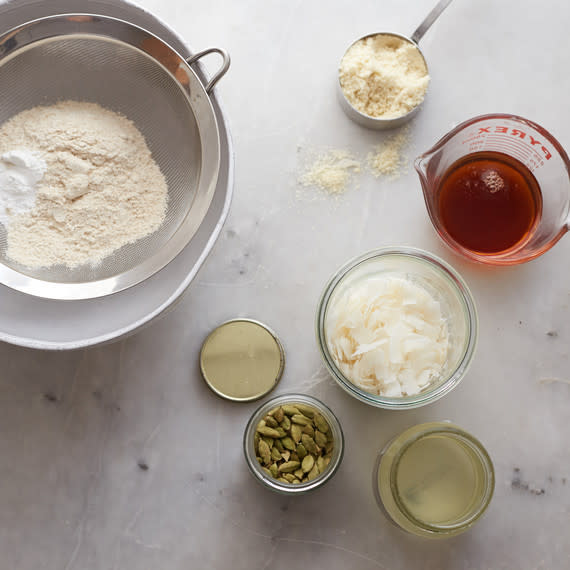Here's the Secret to Baking Success All Professionals Swear By

Anyone who aspires to be a better cook or baker should do as the French do: adopt the practice known as mise en place. Translations vary, but the phrase essentially means to set up, or put things in place, before you begin. Getting into the habit of mise en place is especially helpful when it comes to the science and art of baking. Though it may seem terribly fussy or type A, mise en place is neither. Rather, it's designed to make your time in the kitchen more efficient, to reduce, not increase, the effort exerted. This practice is so crucial to kitchen success, in fact, that it's often the first thing that culinary students learn in their formal training. In terms of baking, it's a technique that will help lead you towards success. Here's what to do to get organized.
First off, read your recipe all the way through. This can't be stressed enough. Surprises midway through just won't do when you're baking. Most baking recipes call for you to preheat the oven, leaving you plenty of time to put things in order while you wait for it to reach the right temperature.
Accordingly, use that time to gather everything you need—not just ingredients, but equipment as well. Substitutions work in some cases, but you'll need to adjust as needed. You don't want to discover once you've mixed a cake batter, for example, that your pan measures ten inches across rather than the necessary eight. Be mindful of gathering requisite items like aluminum foil, parchment paper, and nonstick baking mats, too.
Related: Why You Should Use Unsalted Butter for Baking
Make sure mixing bowls, mixers or food processors, hand tools (whisks, zesters, and so on), and the like are thoroughly clean and dry. If you need to whip egg whites, for example, any traces of butter or other type of fat on the bowl or the beaters will prevent the whites from reaching the proper stage of peak.
You can also use this oven-preheating time to chop nuts or chocolate, grate whole nutmeg, or split and scrape seeds from vanilla beans. These are the kinds of tasks that will set you back if you wait until after you've embarked on the first step. Once you have all the ingredients you need in the required amounts, you're ready to bake. If you have a set of bowls or ramekins in a range of sizes, this is a good time to put them to use.
Finally, mind the temperature of the ingredients—and equipment, too. Many recipes call for chilled butter, for example, while others (including most cookie recipes) require butter to soften to room temperature before you beat it (or cream it, in culinary jargon). If you are whipping cream, it can help to put the mixing bowl and whisk in the freezer for a spell, to get them nice and cold. Of course, there are exceptions to every rule. Some cookie recipes begin with cold or melted butter rather than softened, and a few meringues work best with cold eggs rather than the much more commonly called room temp.
All recipes, however, share this crucial first step: Put everything in its place before you begin.
(function(d, s, id) { if (d.getElementById(id)) return; var js = d.createElement(s); js.id = id; js.src = '//cdn4.wibbitz.com/static.js'; d.getElementsByTagName('body')[0].appendChild(js); }(document, 'script', 'wibbitz-static-embed'));
